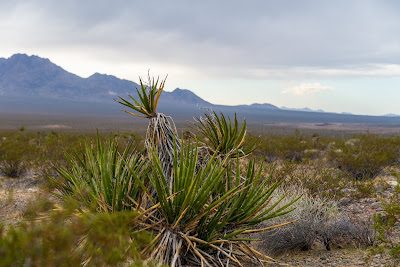Mowing Vegetation as Mitigation: Trump Administration Practice Goes Unchallenged

The Trump administration is again touting the practice of mowing thousands of acres of desert vegetation as environmentally-responsible, despite a preponderance of evidence to the contrary. The draft environmental review of the Yellow Pine Solar project in southern Nevada claims that vegetation mowing - as opposed to bulldozing - will yield positive outcomes that are highly doubtful. This positive framing of the construction practice misleads the public and decisionmakers and ignores decades of scientific research regarding the impacts of mechanized disturbance on desert wildlands. According to the draft environmental review: "Mowing is becoming the standard on large site-type ROWs to prevent permanent impairment of public lands (as mandated by FLPMA) and in lieu of off-site mitigation... Mowing methods are designed to help preserve soils, biological soil crusts, soil seed banks, native perennial vegetation diversity and structure, and cacti and yucca species, and t...






